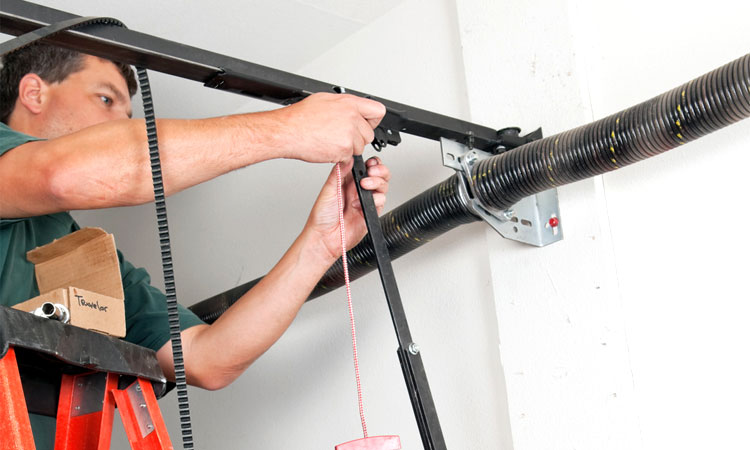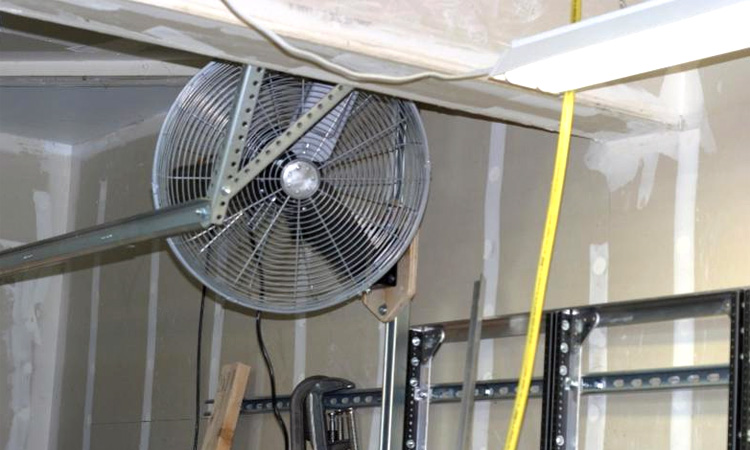5 Tips for Installing a New Garage Door Opener

It is a warm spring day and you’ve decided to finally install that new garage door opener. Perhaps your door is currently a manual, but probably more likely that you have a slow or noisy door opener, or have just gotten tired of the door opening whenever the neighbors across the street change the channel on their TV or worse.
See Also: 8 Best Garage Door Openers
Whatever the reason, the installation of a garage door opener is fairly straightforward, although it may be tough for amateur DIYers. The following Garage Tooled steps will help ensure you have the best experience with installing a new garage door opener.
Garage Door Installation Tips
#1 – Make sure an existing opener actually needs replaced
Sometimes your existing garage door opener is fine, despite apparent issues caused by damaged door components. If your door is noisy or slow, then there might be a broken or loose bracket or roller.
Be warned that the bottom roller bracket has high tension cables and should only be changed by a professional.
Replacing steel rollers with nylon will reduce noise. If the torsion spring above the door is showing a gap, you will need a professional to replace it. Finally, if the door moves on its own when you open it halfway, then the torsion spring needs adjusted.
#2 – Choose an opener that’s right for you
 There’s no real magic here. A single door needs only a one-third or one-half horsepower opener. The one-half is best for double doors, and three-fourths should be used for extra heavy doors.
There’s no real magic here. A single door needs only a one-third or one-half horsepower opener. The one-half is best for double doors, and three-fourths should be used for extra heavy doors.
See Also: Choosing a New Garage Door
In terms of choosing the type of garage opener, this again comes down to personal preference. Chain drives are the cheapest but also the loudest, screw drives require the least maintenance, and belt drives are the quietest but most expensive.
#3 – Install the opener
Follow the instructions in your opener’s manual. For proper measurements, try setting up a stepladder to sit the opener on, using scraps of wood to gain any extra height. This keeps the opener steady and level while you make your marks.
 If the mounting straps which came with your opener are flimsy, then invest is some slotted angle iron at the local hardware store to use instead. Cut it to size and mount to the ceiling with one-inch lag screws in an unfinished garage and three-inch lag screws for a finished ceiling.
If the mounting straps which came with your opener are flimsy, then invest is some slotted angle iron at the local hardware store to use instead. Cut it to size and mount to the ceiling with one-inch lag screws in an unfinished garage and three-inch lag screws for a finished ceiling.
Use two more pieces of angle iron to mount the opener. If the opener is more than six inches from the ceiling, attach an angle brace to help reduce sway.
Next, replace the old photoelectric sensors and wall button, as well as any exposed wires. Your opener will work best with the ones it as packaged with.
#4 – Test your installation
Put your foot gently on the door handle by the floor and try opening it with your remote. Modern doors are designed to stop when there is five pounds of pressure or more.
If it doesn’t, then you need to adjust the force. This is done by adjusting the opening and closing force screws on the opener.
Try no more than 1/8 turn at a time, turning the opening screw if the door stops while opening, and the closing screw if it stops while closing. Tweak until the door functions properly.
#5 – Dealing with a reversing door
If the closing force is adjusted and the door is still reversing when you close it, then check the photoelectric eye. There is a chance that the mechanism has been knocked out of alignment.
There may also be loose wires or cobwebs/dust on the lens. The eye is a very sensitive piece of equipment, and it doesn’t take much to knock one out of whack.
See Also: Reasons Why Your Garage Door Won’t Close






